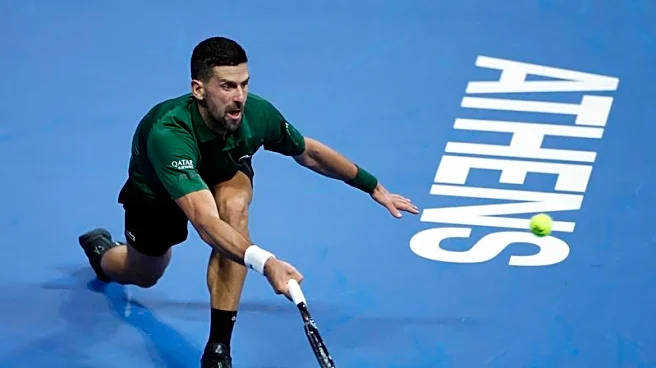What's Happening?
Portia Archer, CEO of the Women's Tennis Association (WTA), has expressed support for a potential merger with the Association of Tennis Professionals (ATP). In a recent interview, Archer outlined a two-step
process for the merger, emphasizing the initial focus on combining commercial assets. This approach aims to streamline sponsorship acquisition and media rights, presenting tennis as a unified product to potential buyers. Archer believes that merging commercial assets will strengthen the sport's market position, allowing for better sponsorship deals and media coverage. The second step involves merging the competitive aspects of the tours, although Archer acknowledges the distinct needs of WTA and ATP athletes. The discussion comes amid ongoing transformations in both leagues, driven by changes in the media landscape and efforts to maximize their value.
Why It's Important?
The proposed merger between the WTA and ATP could significantly impact the tennis industry by creating a more cohesive and marketable product. Combining commercial assets may lead to increased sponsorship opportunities and enhanced media coverage, benefiting both male and female athletes. This move could also address the longstanding issue of equal prize money, as a unified league might attract higher revenue streams. The merger could streamline operations and reduce the need for separate negotiations, potentially leading to more equitable treatment of athletes across genders. However, the distinct needs of WTA and ATP athletes must be carefully managed to ensure the merger's success. The initiative reflects broader trends in sports management, where leagues are seeking innovative ways to adapt to changing media and sponsorship landscapes.
What's Next?
While the merger is not imminent, Archer's comments suggest ongoing discussions and potential future developments. The focus on commercial asset aggregation indicates that initial steps may involve negotiations with sponsors and media partners. Stakeholders in the tennis industry, including athletes, sponsors, and media companies, will likely monitor these developments closely. The success of the merger could depend on the ability to balance the unique needs of WTA and ATP athletes while maximizing commercial opportunities. Future announcements may provide more clarity on the timeline and specific strategies for implementing the merger. As discussions progress, the tennis community will be keen to see how this initiative could reshape the sport's competitive and commercial landscape.
Beyond the Headlines
The merger proposal raises important questions about gender equity in sports. While combining commercial assets could enhance revenue, ensuring equal prize money remains a critical issue. The initiative may also influence other sports leagues to consider similar mergers, highlighting the need for innovative approaches to sports management. Additionally, the merger could lead to cultural shifts within tennis, as stakeholders navigate the integration of two distinct tours. The potential for increased collaboration between WTA and ATP could foster a more inclusive environment, promoting gender equality and shared goals. As discussions continue, the ethical implications of the merger, particularly regarding athlete representation and equity, will be crucial considerations.












